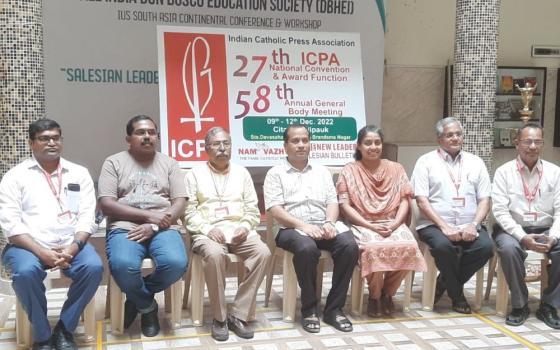Several days ago I received the following article from NCR reader Jim Ewens, a graduate of Marquette High School in Milwaukee, Wisconsin from where I also graduated. He writes of the growing – and alarming – understanding we are gaining of football related brain injuries from repeated concussions. We now know these concussions can lead to long-term disabilities and even death.
My interest in his article is personal. My brother-in-law, Wally Hilgenberg, played for the Detroit Lions and Minnesota Vikings. Four years ago he died from what we later learned (through a brain autopsy) was the result of multiple brain concussions. In full disclosure, Wally’s children, my nephew and nieces, are claimants in the lawsuit of which Ewens writes.
Meanwhile, I also played tackle football for years, including high school and college.
It will take years before we come to understand fully the effects of football on the lives of countless Americans. Ewens article follows:
By James Ewens
Within weeks National Football League players expect to learn whether a proposed $765 million settlement of their case against the league will be upheld by U.S. District Court for the Eastern District of Pennsylvania, Judge Anita B. Brody.
Much is at stake for some 18,000 former professional football players, some 4,500 players involved in the suit, for the 4.8 million young boys who play grade and high school football, and for the 40 million who watch college and professional football every weekend.
The settlement was first announced last August. It is by some accounts modest, especially when one considers the NFL is a ten billion dollar business. Its current contract with ESPN, for example, is worth $1.1 billion (in 2014, $1.9 billion). By comparison, J.P. Morgan is close to agreement with the Justice Department, paying out a possible $13 billion fine, the Catholic Church has paid out well over $2 billion to victims of clerical sex abuse, and the U.S. tobacco companies once paid $207 billion for claims against them by smokers.
However beyond the pending final payment agreed upon in the negotiations the most critical aspect of Brody's ruling is likely to be whether she requires the NFL to make public the records of “what they knew and when they knew it” about the danger of concussions over the past 20 years. Without this stipulation, the full scope of the story will remain locked up in the vaults of the NFL office.
Few can question the importance and complexity of the case which involves former and current players, and NFL football families who have lost husbands and fathers, sometimes to suicide, as a result of brain injuries.
Last month Frontline carried a two-hour program entitled "League of Denial" about the history of what it called "The NFL's cover-up about concussions.” The program was based on the book of the same name, written by two brothers, investigative reporters for ESPN: Steve Fainaru and Mark Fainaru-Wada. Some PBS stations preceded the airing with an earlier one hour Frontline show from March 13, 2011, called "Football High." That program focused on the dramatic expansion of high school football nationally as well as the inherent danger to players.
Some 2.2 million viewers watched the Oct. 8 Frontline program, 1 million more than its average audience. This pales in comparison, however, with the 28.5 million fans who watched this year's most popular NFL game, the Sept. 8th contest between the Green Bay Packers and the San Francisco 49ers.
The statistics presented and comments made during those two shows, along with recent articles on concussions in newspapers, magazines, and on-line blogs, are sobering. The average high school lineman, it is reported, takes 1,000 to 1,500 hits to the head in a single season, according to researchers at the Center for the Study of Encephalopathy at Boston University.
In the first half of this year's NFL season there have been 58 concussions (as noted on Frontline's "Concussion Watch site), an average of 8.3 in 7 weeks of play. Ken Bolson, in his New York Times article entitled "Hits to the Head Don't Differ With Age, Research Indicates” says that more than 25,000 football players from 8-19 years old are taken to emergency room for concussions every year.
"Football High" features a highly publicized game between the top high school teams in Arkansas and Texas in 2010. The Euless Trinity team from Texas, with 89 players (18 of them weighing over 250 pounds) ravaged the Shiloh Christian Saints (with 39 players from a school with 300 students). Halftime score was Texas 53, Arkansas 20. Final score, with many injured players taken off the field, was 80-26. Players from the Trinity team said their coach told them, "We don't want you just to win the game, but to make your opponent lose the next game as well."
One of the people featured in the Frontline "League of Denial" program was a neuropathologist, Dr. Bennett Omalu. It was the autopsy he performed in 2002 on the brain of Mike Webster, a popular center for the Pittsburgh Steelers from 1974-1988, that first proved a direct "cause and effect" connection between C.T.E. (chronic traumatic encephalopathy, a degenerative neurological condition) and professional football. Omalu did another autopsy in 2006 on the brain of Andre Waters, a former Philadelphia Eagles safety who had a reputation as one of the hardest hitters in the game during his 12 seasons in the NFL. Waters had committed suicide by shooting himself in the head. After examining his brain, Omalu was quoted by Alan Schwarz, a freelance journalist, as saying, "Mr. Waters had sustained brain damage from playing football and he says that led to his depression and ultimate death."
When this story was published on the front page of The New York Times on Jan. 18, 2007, Joseph Maroon, M.D., a member of the curiously named "NFL Mild Traumatic Brain Injury Committee" told Omalu, "If only 10 percent of the mothers in America begin to conceive of football as a dangerous game that is the end of football."
Dr. Ann McKee, a neurologist from Wisconsin, who is a staunch Packer fan, has worked at the Boston University Center the past ten years, doing autopsies on the brains of football players. Of the 46 brains she has examined -- including a 21 year old with no previous history of concussions who had committed suicide and an 18-year with evidence of multiple concussions -- 45 had clear evidence of C.T.E. She is quoted in "League of Denial" as saying, "I'm really wondering where this stops. I'm really wondering if every single player has it."
Commentators disagree regarding the fairness of the money involved in the settlement. Sol Weiss, lead counsel on Players Steering Committee, said that while the amount in the settlement is important, expediency was also critical. "I've got a lot of clients who are hurting and need the money, a lot of young players who don't have insurance now. The resolution is a compromise, but, all in all, the settlement is fair."
On the other hand, in a Sportsblog.com poll, 95 percent of current and former players who responded said they thought the NFL "got off cheap". Ninety-four percent of the 284 polled said the decision was based "on making the right business decision," rather than "on doing the right thing for the players."
The rapidly growing body of literature developing around the topic of football and concussions may, in time, challenge the long-range future of the sport. Some experts are advising the NFL to discourage children from beginning tackle football until high school.
Sports Illustrated published a "Special Report" section on its website that carries an article written by the ESPN announcer Scott Fujita, a NFL linebacker from 2002-2012. It is headlined "Would I Let My Son Play Football?" He begs the question because he doesn't have a son. But he does say, "It's not for everyone. But it definitely was for me. And it is definitely for a lot of other people, too. So, just because I am torn about the game, it's not my responsibility to make other parents' decision for them. But I do feel a responsibility to warn them."
Ewens played football, basketball, and tennis at Marquette High School from 1954-57. He was named Athlete of the Year in his senior year. He lives in North Lake, Wisconsin and can be reached at jimewe@yahoo.com.




